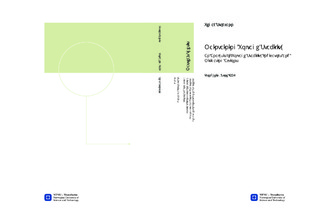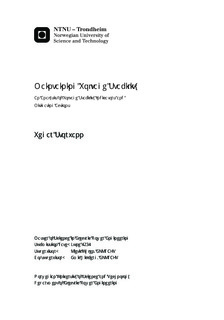| dc.contributor.advisor | Uhlen, Kjetil | nb_NO |
| dc.contributor.advisor | Hillberg, Emil | nb_NO |
| dc.contributor.author | Storvann, Vegar | nb_NO |
| dc.date.accessioned | 2014-12-19T13:53:32Z | |
| dc.date.available | 2014-12-19T13:53:32Z | |
| dc.date.created | 2012-11-08 | nb_NO |
| dc.date.issued | 2012 | nb_NO |
| dc.identifier | 566422 | nb_NO |
| dc.identifier | ntnudaim:7415 | nb_NO |
| dc.identifier.uri | http://hdl.handle.net/11250/257367 | |
| dc.description.abstract | The society's dependency of a reliable power supply is increasing, and properly identifying the distance to the stability limits of the power system and avoiding large disturbances is thus becoming increasingly important. In this thesis, a system integrity protection scheme (SIPS) for voltage instability is proposed. First, six voltage stability indicators are studied and compared, and their performance is tested in several power system models. They are first tested in a two-bus system where the load impedance is gradually increased until the load-side voltage reaches zero. The performance of the indicators is then tested under circuit contingencies in models of the IEEE Reliability Test System and of the Norwegian power system. From the results, the most reliable indicators seem to be the ones that are based on local measurements (SDI, ISI and VSIscc).Several actions to mitigate voltage instability are described and tested in the power system models, including load shedding, switching of reactive compensation equipment, increasing AVR set points and increasing the active power generation. Of the unconventional actions, increasing AVR set points appears to be the most effective mitigation action.A SIPS is proposed based on the above mitigation actions, voltage stability indicators and signals from activation of OELs. The principle behind the scheme is to avoid load shedding as far as possible by using indicator values and OEL activation signals to initiate preventive mitigation actions to relieve the situation when the system is approaching instability. This also reduces the necessary amount of load to shed to stabilise the system.Simulations show that the proposed SIPS works as long as it has an adequate amount of mitigation actions available. In the simulations in the model of the Hammerfest/Skaidi region in Northern Norway, there was a general lack of possible mitigation actions, providing no alternative other than shedding large amounts of load to prevent voltage collapse after critical contingencies. | nb_NO |
| dc.language | eng | nb_NO |
| dc.publisher | Institutt for elkraftteknikk | nb_NO |
| dc.subject | ntnudaim:7415 | no_NO |
| dc.subject | MSELPOWER Master of Science in Electric Power Engineering | no_NO |
| dc.title | Maintaining Voltage Stability: An Analysis of Voltage Stability Indicators and Mitigating Actions | nb_NO |
| dc.type | Master thesis | nb_NO |
| dc.source.pagenumber | 162 | nb_NO |
| dc.contributor.department | Norges teknisk-naturvitenskapelige universitet, Fakultet for informasjonsteknologi, matematikk og elektroteknikk, Institutt for elkraftteknikk | nb_NO |

